Laurie Charles / Le Chalet
03.05.18
—25.08.18
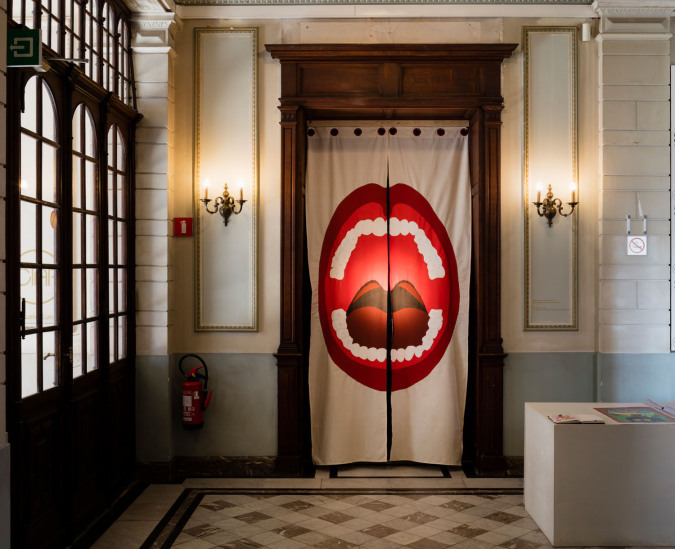


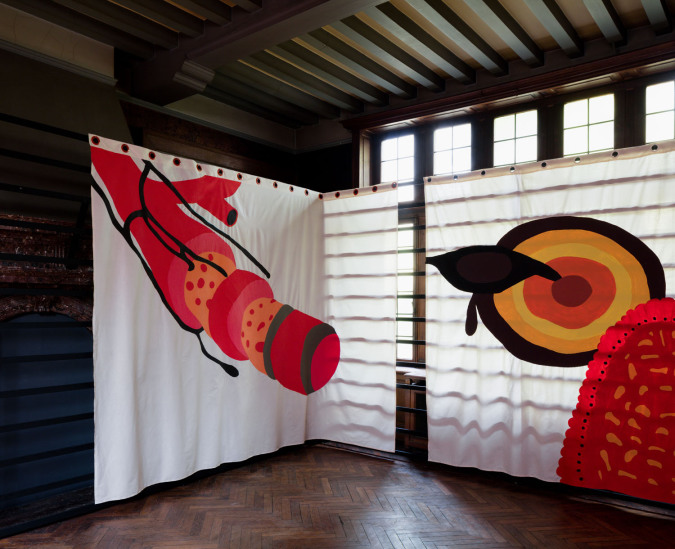

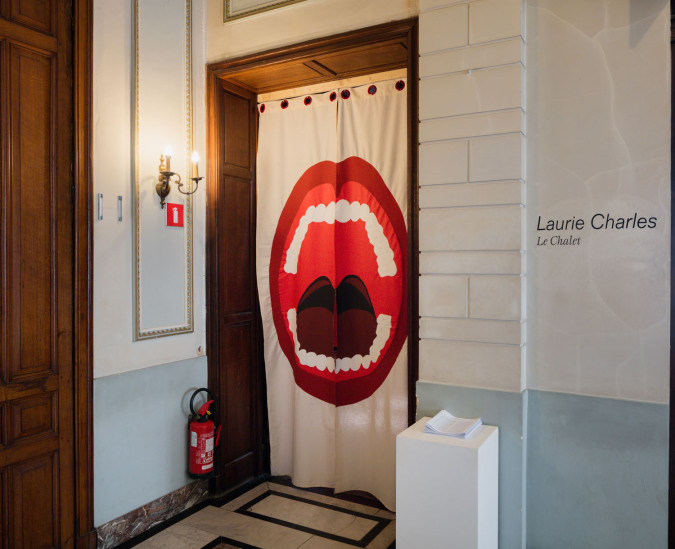

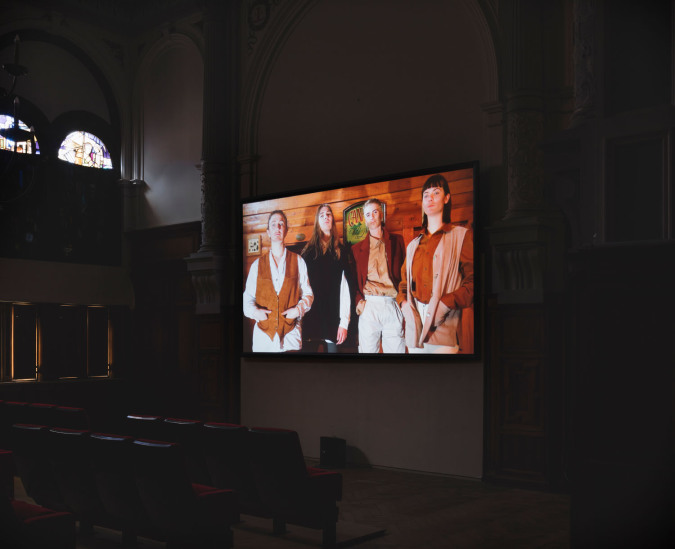
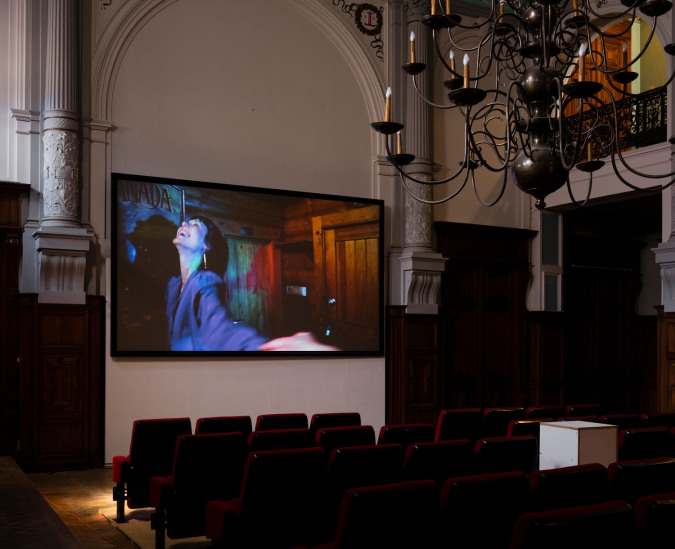
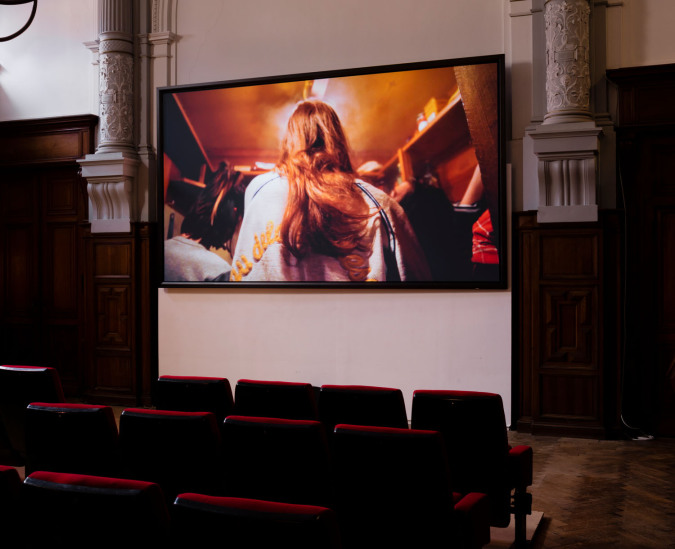
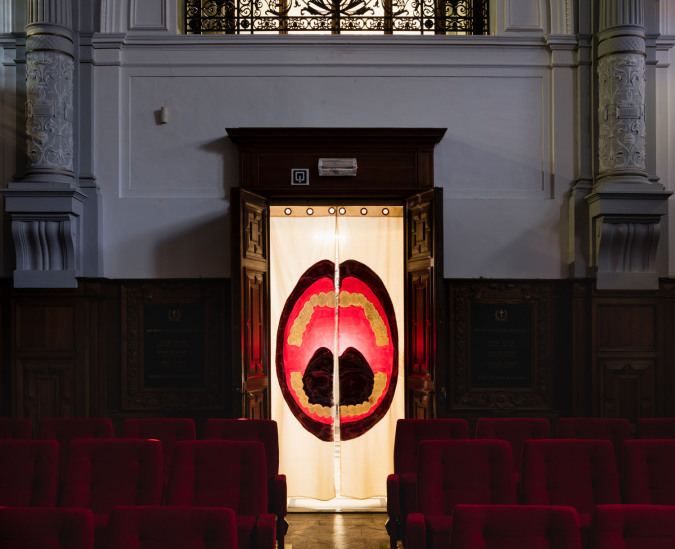
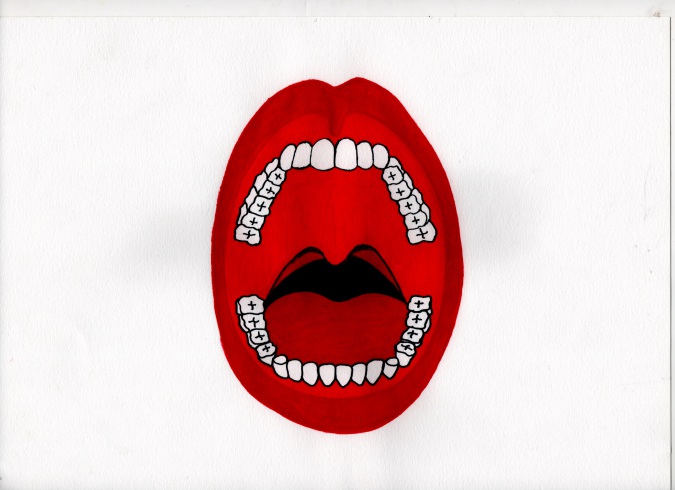
Laurie Charles’ work (°1987) comprises video, writing and painting. In her multimedial practice, the presence of the set often appears as the point of departure. In her work, Charles creates a scenery wherein narratives develop in an unpredictable manner. She is inspired by theories such as speculative fiction, object-oriented philosophy and eco-feminism, which she cuts up and reassembles into a new scenario.
Le Chalet (the shack) - a subtle continuation of her film Love of Matter (2016) - consists of the screening of a movie and of a room decorated with large painted curtains. The film unfolds itself as a strongly layered story, wherein four friends retreat into “the unspoiled nature”, reflecting upon alternative ways of (communal) living outside the social reality of busy city-life. Through the re-enactment of mystical rituals or theatrical experiments in nature, Le Chalet excites a - though fictitious - utopian community. Charles consciously uses a cliché imagery of our contemporary experience of nature which underlines the fictitious dichotomy between nature and culture. In her film, genres such as documentary, fiction and horror blend almost imperceptibly into one another and the shack becomes a character that slowly comes to life. All the more, the camera transforms into an omniscient eye considering humans, animals and objects as each others equals.
In CIAP, Charles’ painted curtains function both as physical and mental set for the film. The life size, colourful paintings depict internal and external human organs, reminiscent of the first cave paintings. Just like those first cave paintings, the film and the canvases represent a (contemporary) quest of humankind for its social and bodily relationship regarding an all-encompassing cosmos.
With the support of: Argos, Atelier Jeunes Cinéastes, Stad Hasselt, Vlaamse Overheid, Fédération Wallonie-Bruxelles, Hasselt Millésime and Duvel Moortgat.

